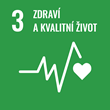
Informace o projektu
Structure and dynamics of PHage Attachment and Genome Ejection (PHAGE)
(PHAGE)
- Kód projektu
- 101130848
- Období řešení
- 8/2023 - 7/2025
- Investor / Programový rámec / typ projektu
-
Evropská unie
- Horizont Evropa
- Fakulta / Pracoviště MU
- Středoevropský technologický institut
Phages have the potential to be used in therapy because they can infect and kill pathogenic bacteria, including those resistant to antibiotics. Although phages are simple, details of their life cycle remain unknown. To start the infection, phages bind to and eject their genomes into bacteria. In the adsorption, the phage baseplate recognises receptors in the bacterial cell wall and, therefore, baseplates determine the phage specificity. Structural knowledge of baseplates will allow for the rational engineering of phage host
range. Before ejection, phage genome is stored inside the capsid under high pressure. Even though numerous studies of genome ejection have been performed, our understanding of this process is still incomplete because, until recently, no suitable methods to study ejection in vivo existed. The adsorption and genome ejection are closely related processes that can be best understood together.
In this project, I aim to determine the high-resolution structure of phiKZ baseplate, one of the largest known bacteriophages, using cryogenic Transmission Electron Microscopy (cryoTEM). The obtained structural information will be complemented by the characterisation of the genome ejection dynamics in vivo. For this purpose, I will use cryogenic Scanning Transmission Electron Microscopy (cryoSTEM), which will enable quantification of the amount of DNA in phage heads at various stages of the infection.
Furthermore, I will also use holotomography for the direct visualisation of the ejection dynamics. Bacterial adsorption and genome delivery remain a dark area with many pending breakthroughs. With this project, I want to shed light on the beginning of the phage life cycle, key for the infection of bacteria. My results will expand our understanding of phage infection and enable retargeting phages to specific bacterial strains, contributing to the development of phage therapy when antibiotic resistance is one of the main health problems worldwide.
Cíle udržitelného rozvoje
Masarykova univerzita se hlásí k cílům udržitelného rozvoje OSN, jejichž záměrem je do roku 2030 zlepšit podmínky a kvalitu života na naší planetě.


